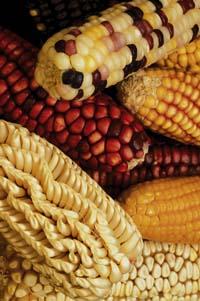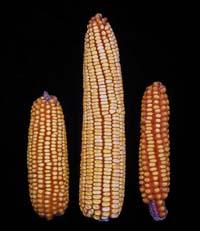The secret of the hybrid

In Iowan, Illinois and neighboring states, maize is of enormous economic importance. There are endless corn plantations and producers always look for the best varieties. Thus, for 80 years they have grown hybrid varieties, which provide a better harvest than conventional maize varieties.
The fact that the hybrid has better characteristics than parents is called heterosis and XX. At the beginning of the 20th century it was demonstrated that this phenomenon was produced in corn. Crossing the northern hard-grain variety with the southern toothed grain variety, a high-performance hybrid was demonstrated. However, at that time they could not hybridize on a large scale, so farmers could not plant this type of maize.
In 1914-1917 the method for producing a commercial hybrid variety was first obtained. From the four varieties, they produced this hybrid by double crossing. Over time, using only two varieties instead of four, and making a single crossing, they obtained interesting hybrids.
Currently the hybrid varieties are widespread. One of them, hybrid F1 maize, is common in the US corn producing countries, as well as parental or 'parent' varieties: Varieties B73 and Mo17. Researchers at the University of Iowa have focused on these three aspects.
Looking at the RNA
B73 and Mo17 are pure varieties, very genetically homogeneous and of specific characteristics. The hybrid F1, formed by the crossing of both, arrives before the parental varieties, grows more and gives a better harvest.

The researchers know all three well, and the genetic map of maize has been developed from a post-F1 hybrid. Current research has also conducted a genetic study, but not to clarify the DNA, but to know what makes the F1 hybrid better than the other two. To do this, the gene expression of three has been studied, measuring the amount of RNA of each gene.
Research has lasted two years. First, the researchers cultivated the three varieties in a controlled environment to ensure that the environment conditions would affect all equally. They then isolated RNA from the three genotypes and analyzed the RNA that contained each gene. With this they have been able to know the activity of each gene. RNA is the intermediate step between gene and protein, so it is an indicator of gene activity.
This is the first time a study has been conducted on such a large scale. Using micromatrix technology, they have simultaneously analyzed the activity of 14,000 genes in the three varieties. And the result is that heterosis does not have a simple explanation, but the mechanisms that explain it are very varied.
First step
To explain why hybrids are better than parental varieties, several molecular models have so far been proposed. According to some models, the activity of hybrid genes is greater than that of parental varieties, which explains why hybrid is better.
In other models, on the contrary, the hybrid is better than the parental varieties, since the expression of the genes is less in the hybrid than in the other two.

Finally, some models do not consider whether the expression of hybrid genes is greater or less than that of parental varieties, so it does not affect the characteristics of the hybrid.
However, the study has shown that in the F1 hybrid some of the genes are more active than in the two parental varieties, others have less activity and the activity of the majority (78%) is in the range of the genes of the other two varieties.
The result, therefore, does not completely resolve the researchers' doubt. This does not mean, at all, that research has been useless. According to the researchers, the study has been really important, as it has been the first step in analyzing what happens in hybrids at the molecular level compared to parental varieties. They have also shown that there is no single mechanism to explain the superiority of hybrids, but that molecular mechanisms are diverse and have proven that hybrid superiority is a complex phenomenon.
In any case, researchers intend to advance and deepen more. In the current process of hybridization it is impossible to know precisely what the result will be, partly due to test errors. In addition, it is expensive. The aim of the researchers is therefore to be able to control heterosia to achieve better hybrids in a more economical way.





